Clematis Zhakmana: description of varieties and tips for growing
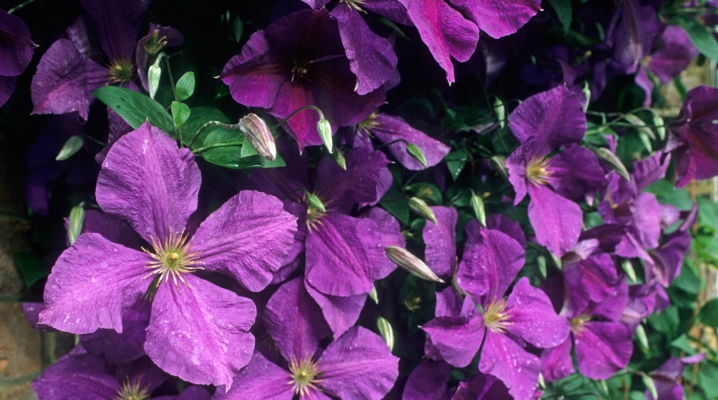
Clematis is an amazing climbing plant with huge flowers. It is difficult to walk past a blooming vine without stopping and admiring it. The second name of clematis is clematis, it arose from the acrid, burning smell of the juice of this plant. There are more than 300 species of this culture, and breeders are breeding more and more new varieties.
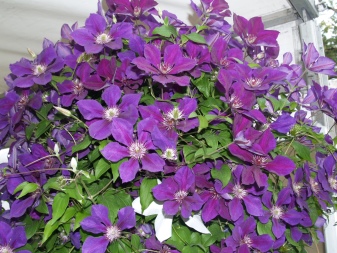
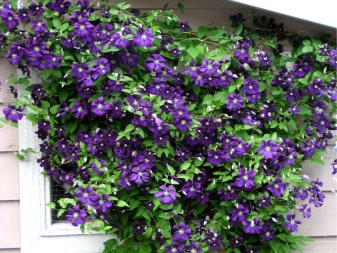
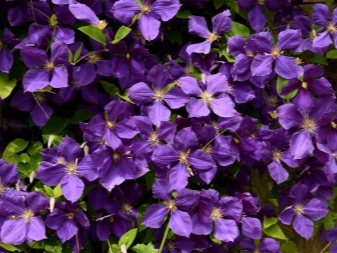
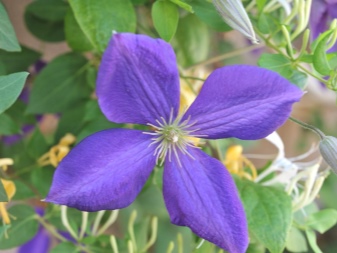
General characteristics
One of the most spectacular species is Zhakman's clematis. In the description of this group of clematis, it should be mentioned that its name comes from the name of the nursery in England (Jackman's nursery), where the first clematis of Zhakman was bred in the middle of the 19th century. It was obtained by hybridizing clematis woolly, purple and Henderson. This type of clematis includes plants growing up to 6 meters in height. The flowers are odorless, painted in a variety of colors from white to dark purple and are striking in their size: their diameter can reach 20 centimeters.
The group of Zhakman's clematis includes plants, the cultivation of which is subject to even beginner flower growers. These clematis can grow on soils of any composition, in sunny and shady areas, they tolerate both hot summers and frosty winters well.
A distinctive feature of Zhakman's group clematis is that the flowers on this vine bloom only on young lashes. Blooming clematis can be seen from early summer to mid-autumn.

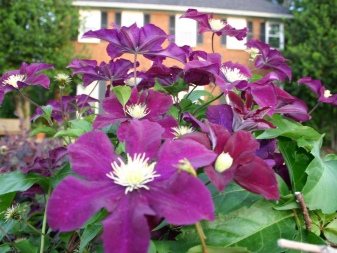
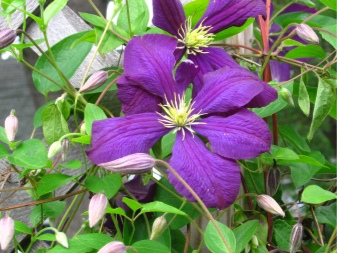
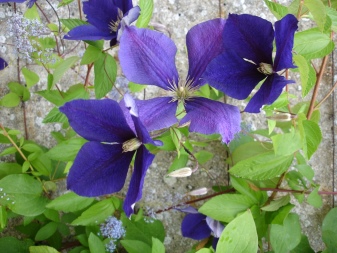
Review of popular varieties
Some varieties are worth getting to know.
- "Superba" - one of the best varieties of clematis of the Zhakman group. Shoots grow up to three meters. During flowering, they are completely covered with large bright purple velvet flowers.

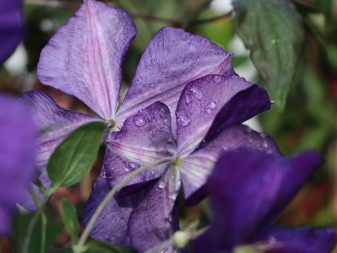
- "Blue flame" - one of the most famous and popular varieties. It is quite unassuming and can withstand harsh winters. It blooms in early July and pleases us until autumn with velvet rich blue flowers.


- "Nikolay Rubtsov" - dark purple flowers bloom on this clematis. Then, under the rays of the sun, they turn pale pink. Therefore, on one clematis bush, you can see flowers of several shades at the same time. Clematis "Nikolay Rubtsov" will look best on a shady area.
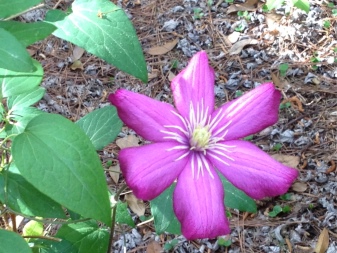
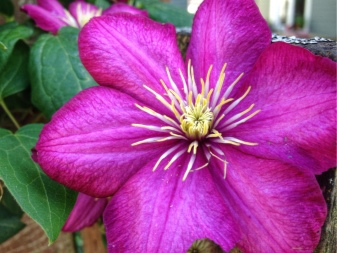
- "Rahvarinne" - the result of the work of Estonian breeders. The flowers of clematis are purple, with a longitudinal dark stripe on each petal. The edges of the petals are corrugated. This plant blooms from July to October. The scourges of "Rakhvarinne" grow up to only 2 m in length.

- "Bella" - the only variety related to Zhakman's clematis that has snow-white petals. A low-growing 2-meter liana during flowering is all covered with white, medium-sized flowers. "Bella" looks very advantageous when planted near dark-leaved plants. This clematis does not require frequent watering, it easily survives severe winters.
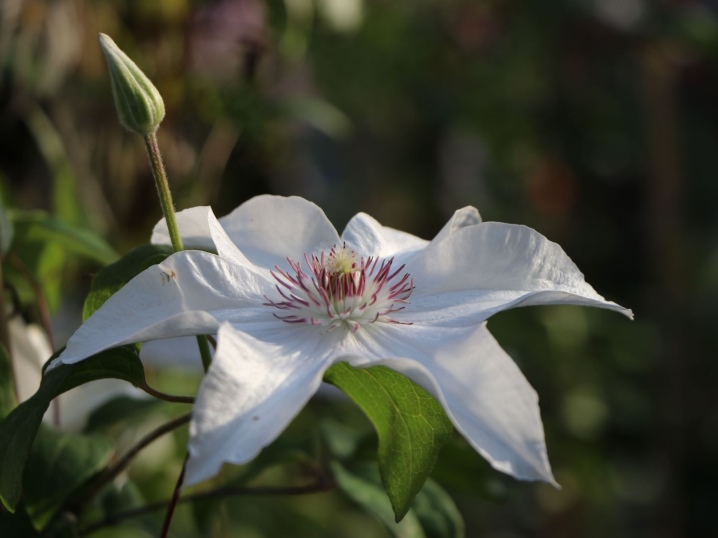
Landing features
First of all, for the good development of clematis, you need to choose the right site for planting. Clematis loves the sun, but they can grow in partial shade. If you planted clematis in an open, sunny place, plant some low plants under the bush so that the clematis roots do not overheat.
The place where clematis will grow should not be flooded with water. It is most advisable to plant clematis in early spring.
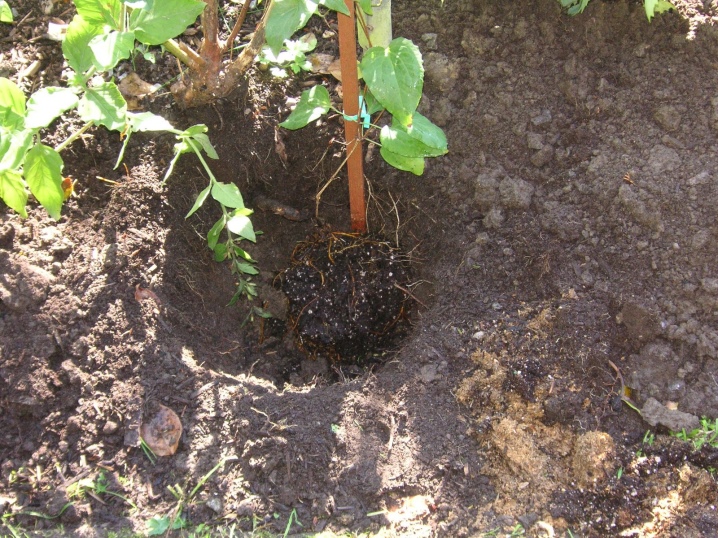
How to plant clematis correctly:
- dig a depression in the ground, the size of which directly depends on the volume of the root system of the seedling;
- lay drainage (pebbles, crushed stone, expanded clay);
- prepare the soil - mix peat, humus, sand and plain earth in a 1: 1: 1: 1 ratio, add fertilizer for clematis, following the instructions on the package;
- plant the plant in the center of the planting pit, slightly deepening the neck of the root and sprinkling it with sand.
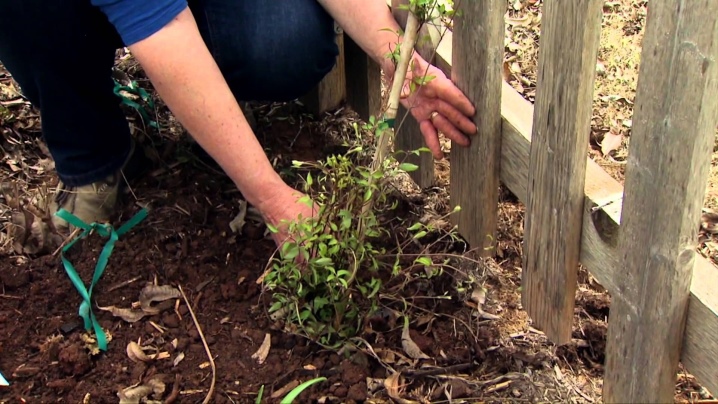
Care Tips
To get a healthy, abundantly flowering plant, you must follow the simple rules for caring for clematis.
Water clematis regularly and abundantly. When a crust begins to appear on the surface of the soil, it is necessary to loosen it.
Occasionally you need to apply fertilizer under the growing bush. In spring, young shoots need nitrogen fertilizers, and when buds are formed, phosphorus fertilizers.
As mentioned above, clematis of the Zhakman group bloom only on the whips of the current year. There are no buds on last year's lashes. Therefore, before the onset of the first frosts, clematis should be cut shortly. After that, provide shelter, for example, with spunbond, straw, burlap.
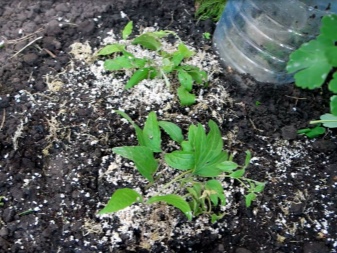
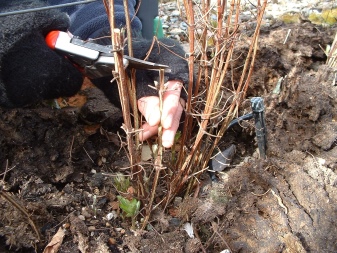
Reproduction
Jacquemann group clematis can be propagated in several ways. Let's dwell on each of them in more detail.
Seeds
It is important to know that when sowing clematis seeds, their varietal characteristics are not transmitted. From seedlings, either wild or species clematis will grow.
Seeds can be sown in boxes for seedlings, or directly into the ground. Clematis is not very fond of transplanting, so plants grown in seedlings will develop much more slowly.
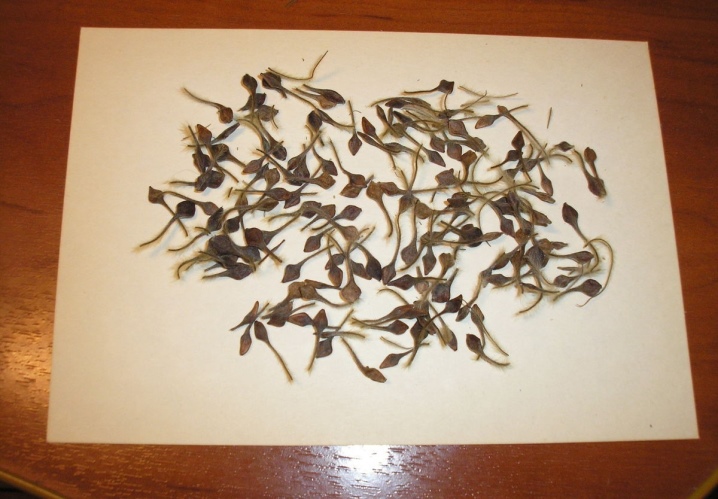
There are two ways to propagate clematis by seeds.
- Autumn. Carried out before the first frost. Seeds should be sown at a great distance from each other in pits or grooves 3-5 centimeters deep.
- Spring. Seeds must be stratified before sowing. They should be kept for three months at temperatures from 0 to 7 degrees Celsius. To do this, you can put the seeds mixed with wet sand in the refrigerator for 12 weeks. In the spring, sowing is carried out in the same way as in the fall.
When the first pair of leaves appears, clematis should dive. It is advisable to shade young clematis from the bright sun. It is necessary to regularly water, weed and loosen them.
After a year, the seedlings can be planted in permanent places, deepening a couple of centimeters and covering the root collar with sand. Young plants require mandatory shelter for the winter with preliminary pruning almost at the root.
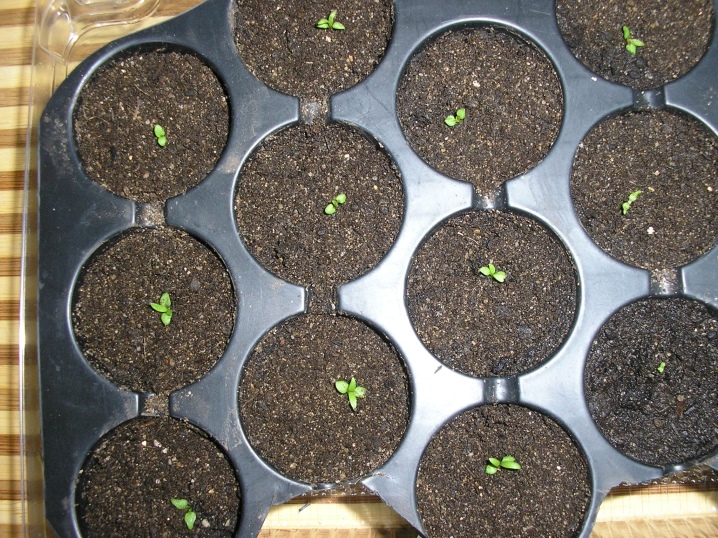
By cuttings
Jacquemann's clematis can be propagated using cuttings. This method allows you to preserve the varietal characteristics of the mother plant, but flowering will have to wait a long time. Before flowering, cuttings are cut from the shoots of the current year with a sharp disinfected tool. Of these, only the middle parts are taken with a pair of internodes 4-12 centimeters long. Cut each sheet in half.
If desired, you can use a growth promoter by following the instructions on the package. Garden soil with the addition of sand and peat is suitable for rooting. Cuttings must be deepened to the first internode and mini-greenhouses made to maintain a favorable microclimate. Clematis will take root within 30-60 days. At this time you need:
- water the cuttings, making sure that there is no stagnation of water;
- spray with water from a spray bottle, thereby providing increased air humidity;
- ventilate regularly.
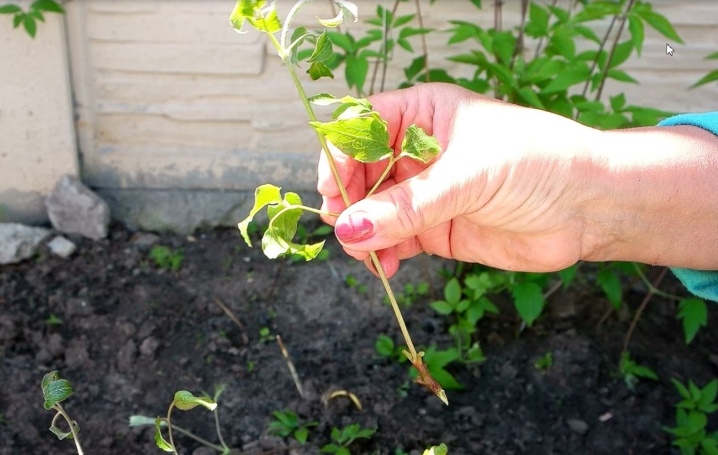
In the first wintering, young plants must be covered with straw, leaves or spruce branches. Even the most frost-resistant varieties of clematis of the Zhakman group at first require careful shelter.
In spring, one-year-old seedlings can be transplanted to a permanent place.
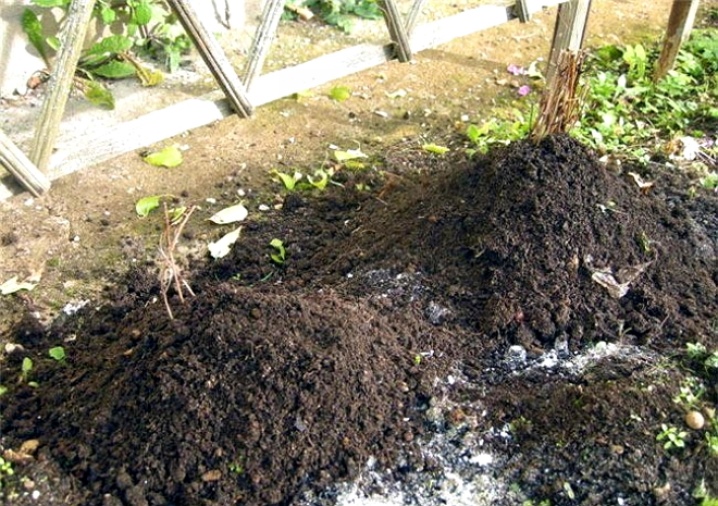
By dividing the bush
If clematis is older than 5 years, and it has grown enough, then it can be divided. Moreover, young plants will bloom this year. Clematis does not tolerate a transplant. Therefore, clematis can be propagated by dividing the bush only in extreme cases: when it has thickened strongly, or it is simply necessary to transplant it to another place.
You can divide clematis both in spring and autumn. In early spring, you need to choose the moment when the buds have already swollen, but growth has not yet begun. And at the same time, the soil is warm enough. But clematis transplanted in spring will hurt for a long time and develop poorly.
Therefore, experienced florists advise dividing the clematis bush in the fall. Then clematis will have time to gain strength and show themselves in all their glory.

Let's consider in more detail the division of clematis in the fall.
- Dig holes for planting, watering them thoroughly with water.
- Cut the shoots short, leaving two internodes on each.
- Clematis roots are very sensitive, so you need to very carefully dig out the clematis, being careful not to damage them. Gently shake off the ground.
- Divide by hand or cut the clematis into divisions with a sharp tool, each of which should contain 1-2 shoots with good roots. Clematis can only be divided into 2-3 parts.
- The damaged roots should be removed. Place the delenki in a weak solution of potassium permanganate or "Fungicide" for 15-30 minutes.
- Plant in a new permanent place, deepening the root neck by 5-10 centimeters. It is not necessary to water the immediately planted plant. This can be done after a week.
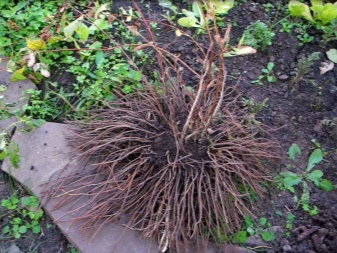
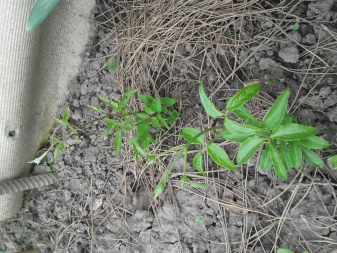
Layers
This is a very simple and reliable way of breeding Zhakman's clematis. With it, the original bush is not injured at all. This breeding option is used in spring or early summer.
A long hole 10 cm deep should be dug at the base of the mother clematis bush. Select a healthy shoot and place it horizontally in the groove, leaving the top of the head free.
Gently cover all internodes with soil, without sprinkling the leaves. Fix this shoot in the soil by pinning it with any available materials: wire, twigs, flyers, staples for plants. Water abundantly.
With good care, roots will appear from each internode by the end of summer. But it is not recommended to plant the children right away. In the spring of next year, young shoots will appear, and by the end of summer they can be planted, guided by the above planting rules.
There is another option for breeding clematis by layering. It is necessary to spud the bush of the mother plant with earth, not reaching the 4th internode. In 2 years, and if you are lucky, then in a year, daughter plants will appear from the internodes. They should be separated from the buried shoot and planted in a prepared place.
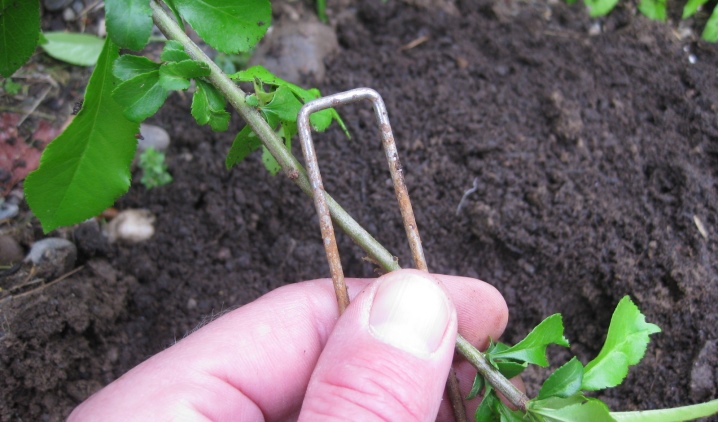
Diseases and pests
Even with the most careful care, Zhakman's clematis are affected by diseases and attacked by pests.
To defeat the disease it is necessary to correctly diagnose and prescribe adequate treatment. Let's consider some of the most common diseases affecting clematis.
Wilt (wilt)
This is one of the most dangerous diseases affecting clematis. A fungus of the genus Verticillium settles in plants. The mycelium of this fungus clogs the vessels of clematis. Clematis stops breathing, eating, the shoots turn brown and wither quickly. Whole lashes can dry out in one day. Most often, such a fungus affects young clematis, which do not have enough sunlight. Fighting the wilt is almost useless.
You can spray the plant with fungicides, but more often than not, this does not help. It is better to uproot and destroy a diseased clematis bush immediately so that other plants do not become infected.
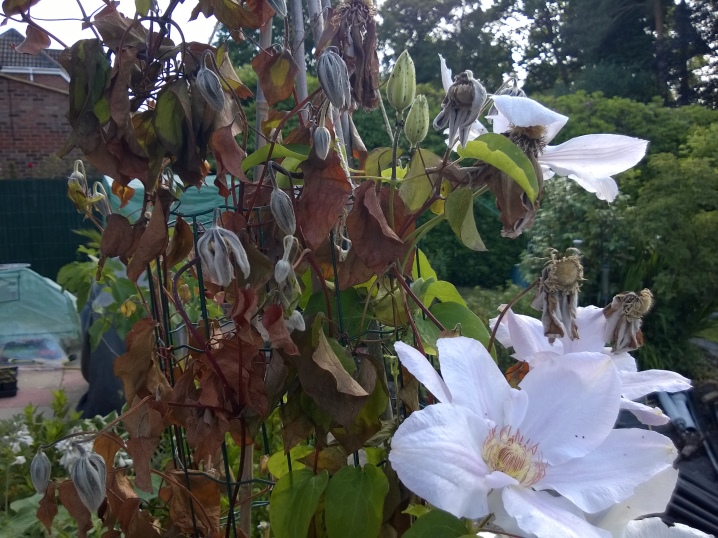
Gray rot
When this disease is affected, the leaves and petals of clematis are covered with light brownish-gray pubescent spots. This is the fungus of Botrytis. The leaves and shoots affected by it die off, clematis gradually dies. The fungus grows well in shady and humid places. Its spores, carried by the wind, settle on healthy plants, and not only on clematis, but also on any garden, horticultural and ornamental crops.
If gray mold is not dealt with, the entire garden area can be damaged. Infected plants should be treated with fungicides, after removing heavily infested flowers and leaves.

Powdery mildew
It is very easy to distinguish this disease from others. Affected plants look, as the name implies, as if sprinkled with flour. The overgrown mycelium of the fungus may resemble a white or light gray fluff. Diseased plants are depleted, wither and die, as the fungus sucks out all the nutrients from clematis. Just as in the previous case, plants planted in the shade get sick with powdery mildew. They fight this disease by treating plants with copper sulfate or a solution of fungicides.
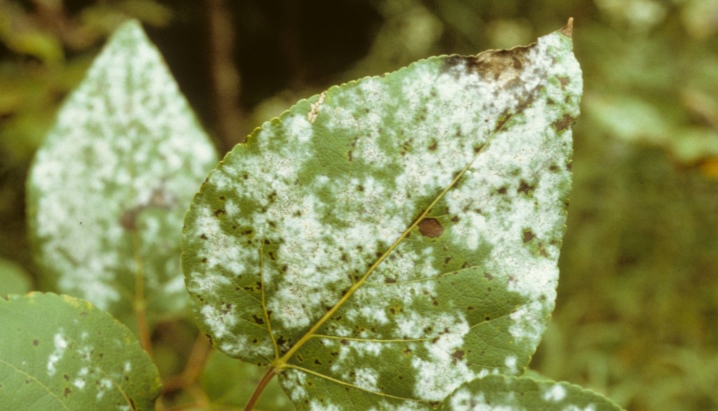
Clematis of the Jacquemann group are also exposed to the invasion of various pests.
Nematodes are small roundworms that attack the roots and stems of clematis. The appearance of nematodes is evidenced by suspension of the growth of the clematis bush, shredding of leaves and flowers, ugliness of the buds, thickening on the roots. Prevention of the appearance of nematodes is in planting healthy seedlings and careful care of clematis (timely watering, loosening, weeding).
It is impossible to fight nematodes, therefore diseased bushes must be immediately destroyed.
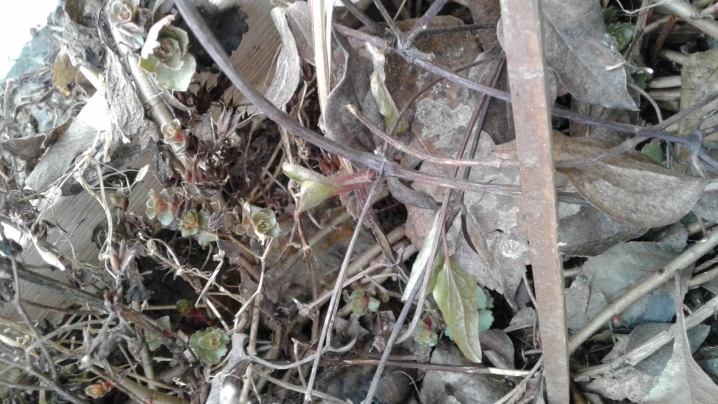
Aphids are small insects that settle on the lower part of the leaf blade and suck out the sap of the plant. At the same time, the leaves are deformed and die, clematis becomes weakened, flowering stops. The fight against aphids is:
- increasing air humidity around clematis by spraying it with water;
- washing off insects by hand;
- insecticide treatment.
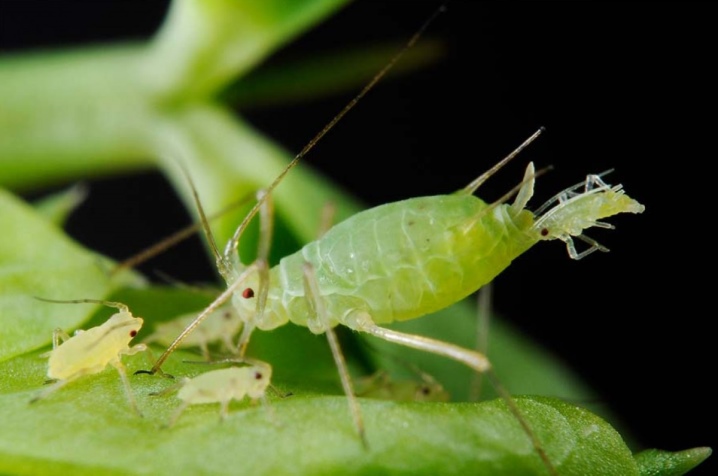
Spider mite - braids the underside of clematis leaves with a thin cobweb. The mite itself is microscopic in size, so often the defeat of clematis by the mite is not immediately determined. This arachnid sucks out the juices of the plant, clematis weakens and gradually dries up. Control methods, as in the previous case: increasing air humidity and spraying with insecticides.
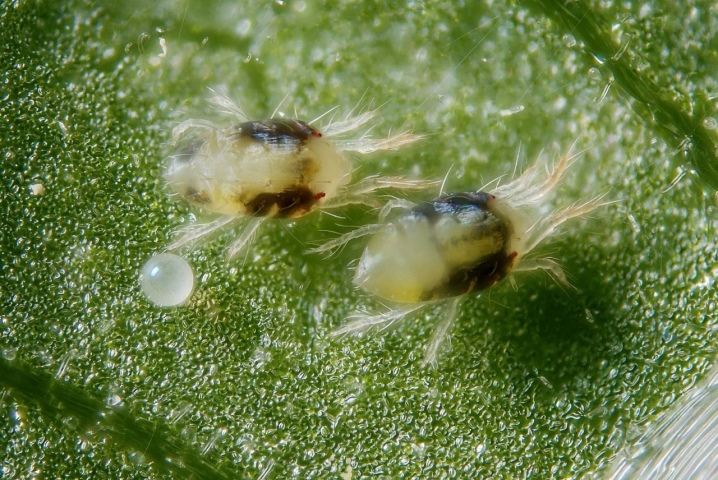
Slugs - in the evening and at night they eat leaves and stems. They love moisture and shady places. Control measures:
- collection of pests by hand;
- mulching with dry substances such as eggshells, stone chips;
- scattering granules with "Metaldehyde" or aluminum sulphate under a bush.

For the clematis of Zhakman's groups, see the next video.







































































































The comment was sent successfully.